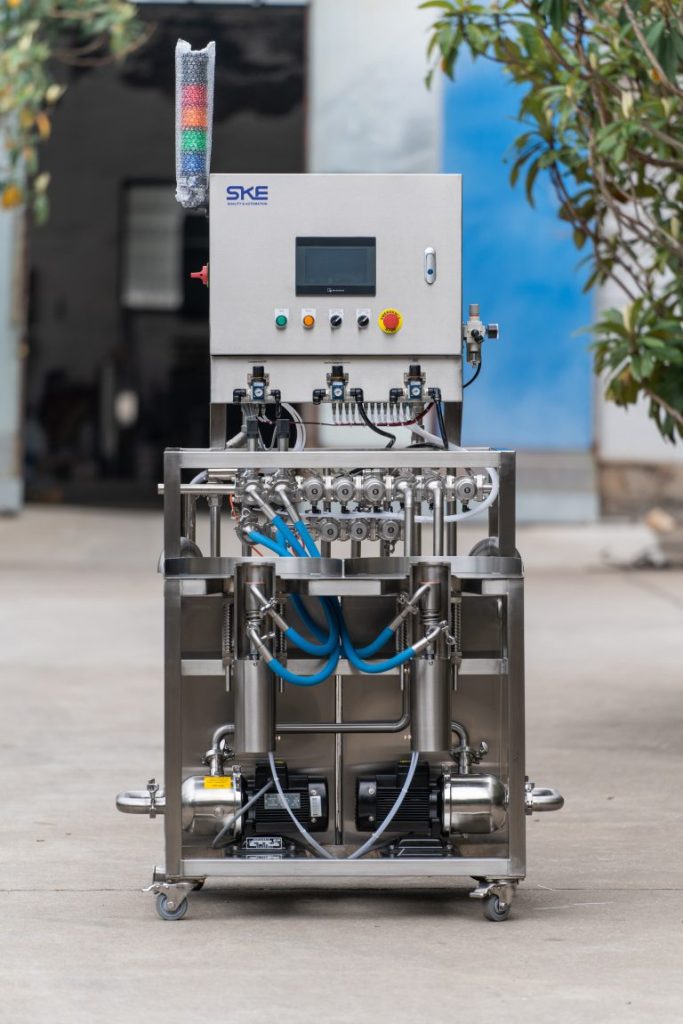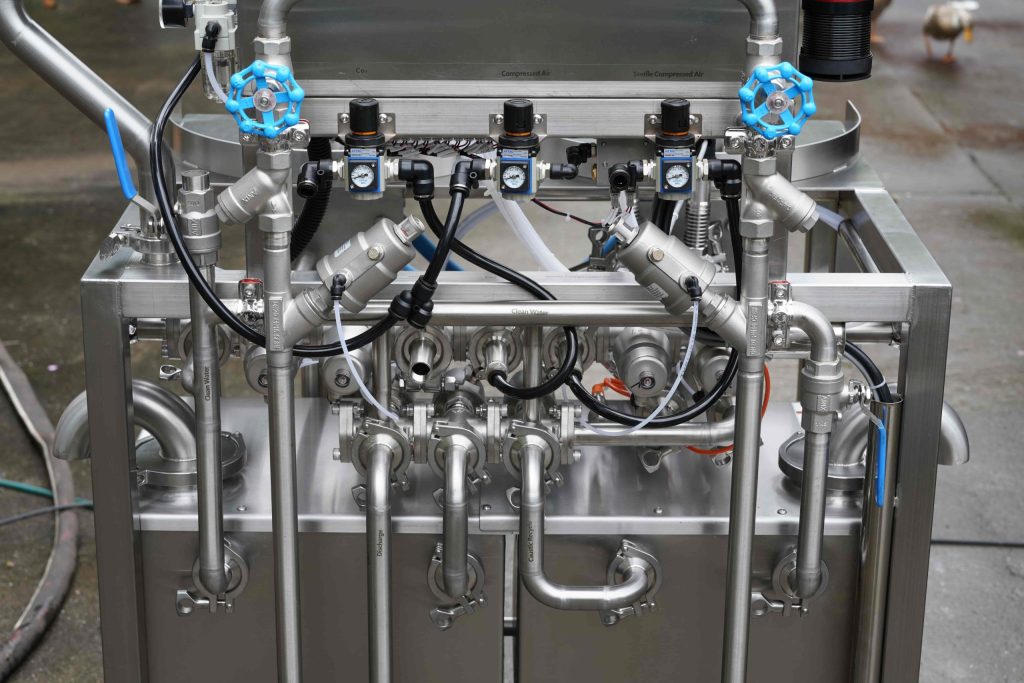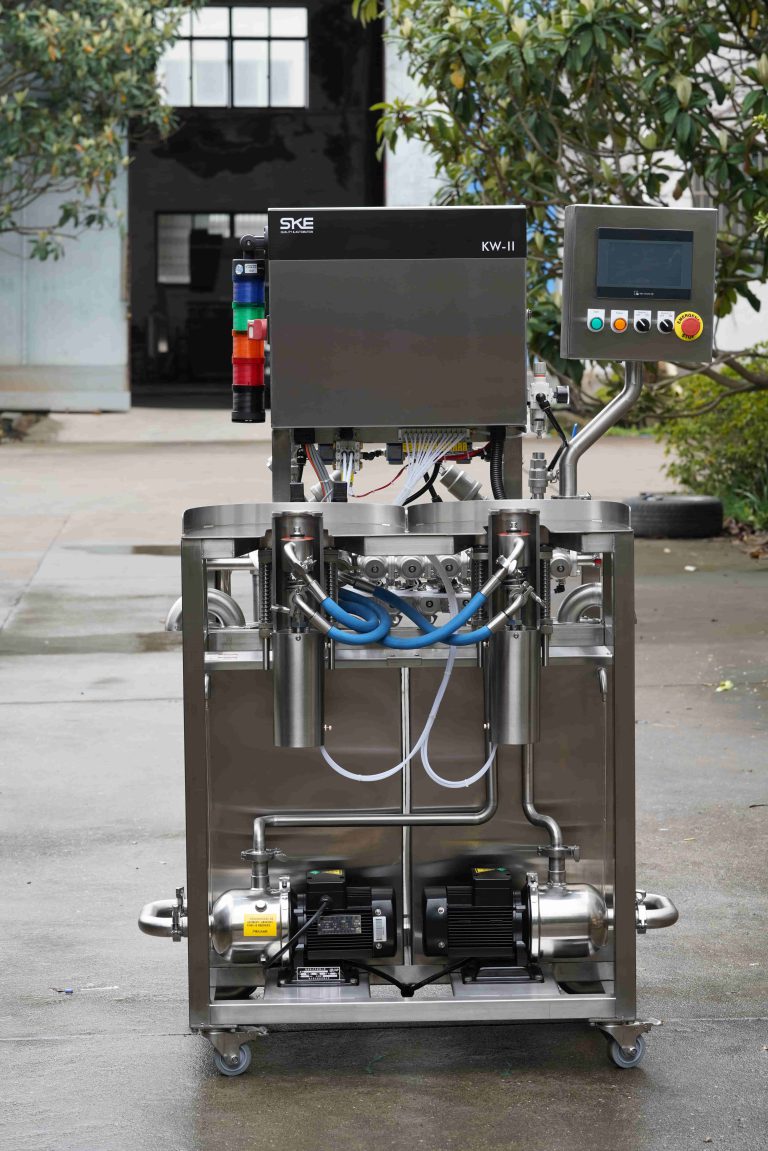Introdução

Na indústria cervejeira extremamente competitiva de hoje, a eficiência operacional é essencial para o sucesso. Um dos fatores críticos para atingir e manter essa eficiência está na gestão eficaz dos processos de limpeza de barris. Um sistema robusto de limpeza de barris não só garante a limpeza e higiene dos barris, mas também otimiza os fluxos de trabalho da cervejaria, permitindo que os cervejeiros se concentrem mais em seu ofício. Este blog explora o papel fundamental dos sistemas de limpeza de barris na melhoria da eficiência da cervejaria, detalhando seus benefícios tanto para pequenas cervejarias artesanais quanto para instalações de produção em larga escala.
Importance of a Keg Cleaning System
A keg cleaning system is indispensable for breweries aiming to uphold high standards of cleanliness and quality throughout their operations. Let’s delve deeper into the specific functions and advantages that such a system offers:
Ensuring Hygiene and Quality Standards
Maintaining stringent hygiene standards is crucial in the brewing process to prevent contamination and ensure the integrity of the beer. A dedicated barrel cleaning system employs specialized cleaning agents and processes to thoroughly sanitize kegs, eliminating any residues or contaminants that could compromise the beer’s taste and safety. By adhering to these standards, breweries can consistently deliver high-quality products to their consumers.
Streamlining Operations
Efficiency gains are perhaps the most significant advantage of implementing a keg cleaning system. Manual cleaning processes are labor-intensive and time-consuming, often diverting valuable resources from brewing operations. Automating the cleaning process with a barrel cleaning system reduces labor costs, minimizes downtime between batches, and optimizes overall brewery workflow. Brewers can allocate more time and resources to brewing, packaging, and other core activities, thereby enhancing productivity and throughput.
Extending Keg Lifespan
Proper cleaning and maintenance significantly extend the lifespan of kegs, reducing the frequency of replacements and associated costs. A well-maintained keg fleet not only improves operational efficiency but also contributes to long-term cost savings. By investing in a keg cleaning system, breweries can protect their capital investments in kegs while ensuring that each container maintains its structural integrity and cleanliness over multiple use cycles.
Components of a Keg Cleaning System
A keg cleaning system comprises several essential components, each playing a crucial role in ensuring effective cleaning and sanitization. Understanding these components is essential for breweries considering the implementation or enhancement of their cleaning systems:
Cleaning Process Overview
The cleaning process within a barrel cleaning system typically involves multiple stages, starting with the removal of residual beer and sediments. This is followed by a thorough cleaning cycle using high-pressure water jets and cleaning agents to eliminate bacteria and other contaminants. Finally, the kegs undergo a sanitization phase to ensure microbiological safety before being refilled with fresh beer.
Componentes-chave
Key components of a keg cleaning system include:
- Cabeças de limpeza: Devices equipped with nozzles that deliver high-pressure water and cleaning solutions into the kegs.
- Bombas: Responsible for circulating cleaning solutions and water through the keg cleaning system.
- Chemical Dosing Systems: Control the precise dosing of cleaning agents, ensuring effective cleaning without damaging the kegs.
- Control Panels: Provide operators with intuitive interfaces to monitor and control the cleaning process, including cycle times and temperature settings.
Each of these components contributes to the efficiency and effectiveness of the cleaning process, ensuring that kegs are thoroughly cleaned and sanitized between uses.
Case Studies and Success Stories
Real-world examples highlight the tangible benefits of implementing a keg cleaning system in brewery operations. For instance, small craft breweries have reported significant reductions in cleaning times and labor costs after adopting automated cleaning systems. Large-scale production facilities have benefited from enhanced operational efficiency, allowing them to meet increasing consumer demands while maintaining product quality and consistency.
Implementing a Keg Cleaning System
Implementing a keg cleaning system involves careful planning and consideration of various factors to ensure seamless integration into existing brewery operations:
System Selection Criteria
Choosing the right keg cleaning system depends on several factors, including brewery size, production volume, automation requirements, and budget constraints. Breweries must assess their specific needs and operational goals to select a system that aligns with their requirements effectively.
Installation and Integration
The installation process involves integrating the keg cleaning system into the brewery’s infrastructure, including plumbing and electrical systems. Breweries should collaborate closely with system suppliers and technicians to ensure proper installation and minimize disruptions to ongoing operations.
Manutenção e solução de problemas
Regular maintenance is essential to maximize the longevity and performance of a barrel cleaning system. Breweries should establish routine maintenance schedules, conduct periodic inspections, and train staff on proper cleaning procedures and troubleshooting techniques. Proactive maintenance not only prevents equipment downtime but also ensures consistent cleaning quality and operational reliability.
Case Studies and Success Stories

Impact of Keg Cleaning System Implementation
| Brewery Size | Annual Production | Efficiency Gains (%) | Cost Savings ($) |
|---|---|---|---|
| Small Craft Brewery | 10,000 barrels | 20 | 25,000 |
| Medium-Scale Brewery | 50,000 barrels | 35 | 75,000 |
| Large Production Brewery | 200,000 barrels | 50 | 200,000 |
Conclusão
In conclusion, a well-designed sistema de limpeza de barris is indispensable for breweries seeking to enhance operational efficiency, maintain product quality, and achieve cost savings. By investing in automated cleaning solutions and adhering to best practices, breweries can streamline their operations, extend the lifespan of their kegs, and ultimately improve their competitive edge in the market. Implementing a keg cleaning system is not just a strategic decision but a critical investment in the long-term success and sustainability of brewery operations.
Perguntas frequentes
Q:What is the importance of a sistema de limpeza de barris in a brewery?
A:A keg cleaning system ensures that kegs are thoroughly cleaned and sanitized between uses, preventing contamination and maintaining beer quality.
Q:How does a keg cleaning system improve operational efficiency?
A:By automating the cleaning process, breweries can reduce labor costs, optimize workflow, and focus more resources on brewing and packaging operations.
Q:What are the essential components of a sistema de limpeza de barris?
A:Key components include cleaning heads, pumps, chemical dosing systems, and control panels, each playing a vital role in the cleaning and sanitization process.
Q:How can breweries benefit from implementing a keg cleaning system?
A:Benefits include extended keg lifespan, reduced operational costs, improved product quality, and enhanced overall efficiency.

